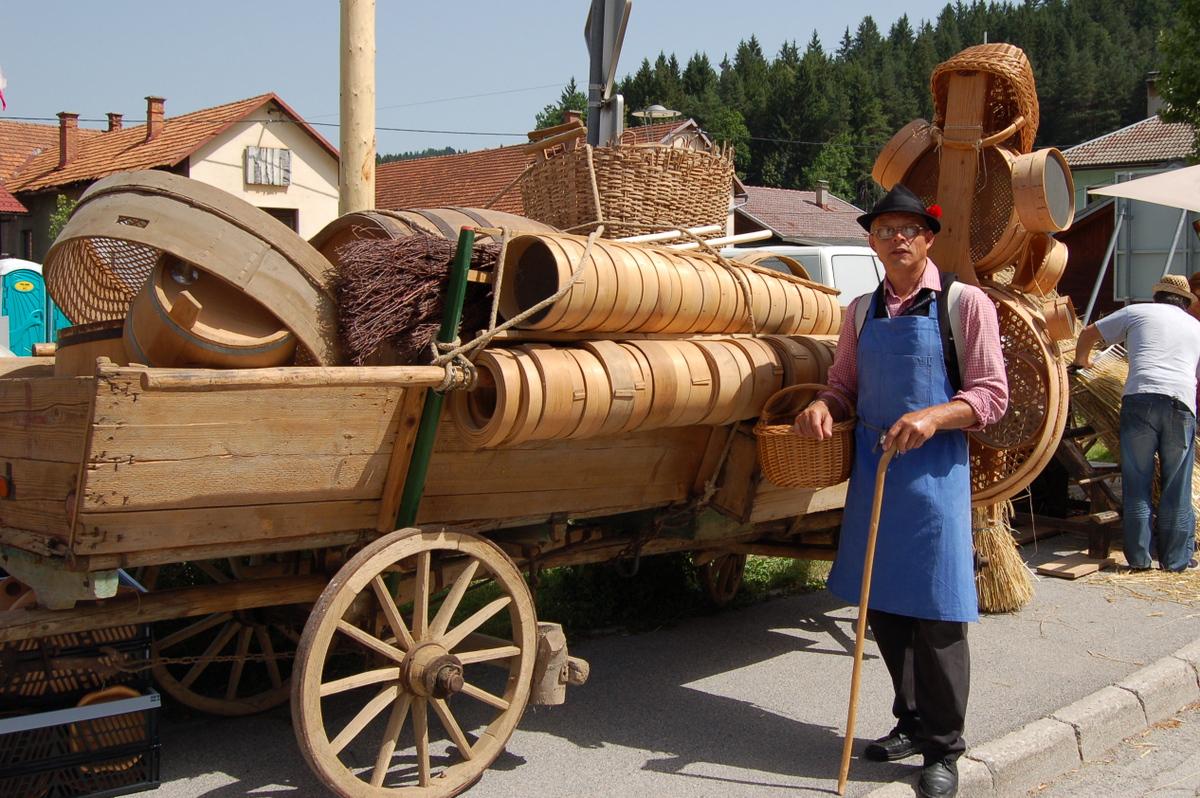
The area around the towns of Kočevje and Ribnica in southern Slovenia has never been a particularly wealthy part of the country. Long, sowy winters and poor soil has tended to make the lives of local residents difficult, forcing them to earn a better living abroad. For centuries, many people from the village of Kočevje and Ribnica traveled Europe hawking woodenware – a tradition that, in a somewhat different form, survives to this day.
The tradition of making woodenware – various household objects, ranging from spoons to brooms – is an old one, probably predating the Slavic settlement in the region. By the late Middle Ages, the craft was common source of income in the region, and in the 15th century, the residents of the Ribnica and Kočevje obtained the unique privilege of being allowed to sell woodenware products across the Hapsburg Empire without having to pay taxes.
For years, the men – known in Slovenian as “krošnjarji” – would travel far from home, wearing large baskets on their back – baskets that contained various woodenware products. The peddlers traveled on foot or by horse-drawn wagons, always covering substantial distances. Each peddler was assigned a certain territory; this prevented them from competing against each other. “Krošnjarji” from Kočevje and Ribnica were eventually a common sight throughout Central and Southeastern Europe, from Germany to Bulgaria. Some even traded with Africa and Asia.
The advent of railroads made the peddlers’ work much easier. They abandoned their wagons for the new, faster means of transportation, but remained loyal to the traditional methods of selling their ware. They also eventually began to sell products made elsewhere – including chocolate, exotic fruit, books, and even medications. They purchased them in Trieste and then resold them for a profit. However, they still traveled the continent with baskets on their backs, telling stories, and singing songs. “Krošnjarji” played such a prominent role in the public consciousness that they even inspired a popular song, “Ribnčan Urban.”
The 20th century changed everything for Slovenia’s woodenware peddlers. The advent of cheap, industrial production and the emergence of village stores dented their profits. The arrival of industry and greater mobility opened up other, more promising opportunities for the area’s young.
But a number of locals still travel Slovenia selling woodenware. Much pf the old-fashioned romance is gone – the present-day “krošnjarji” travel in modern vans and most of their products are no longer hand-made. Still, they are keeping alive a tradition that dates back centuries and that has shaped the both the economic and the cultural history of the Kočevje and Ribnica valleys.

































































